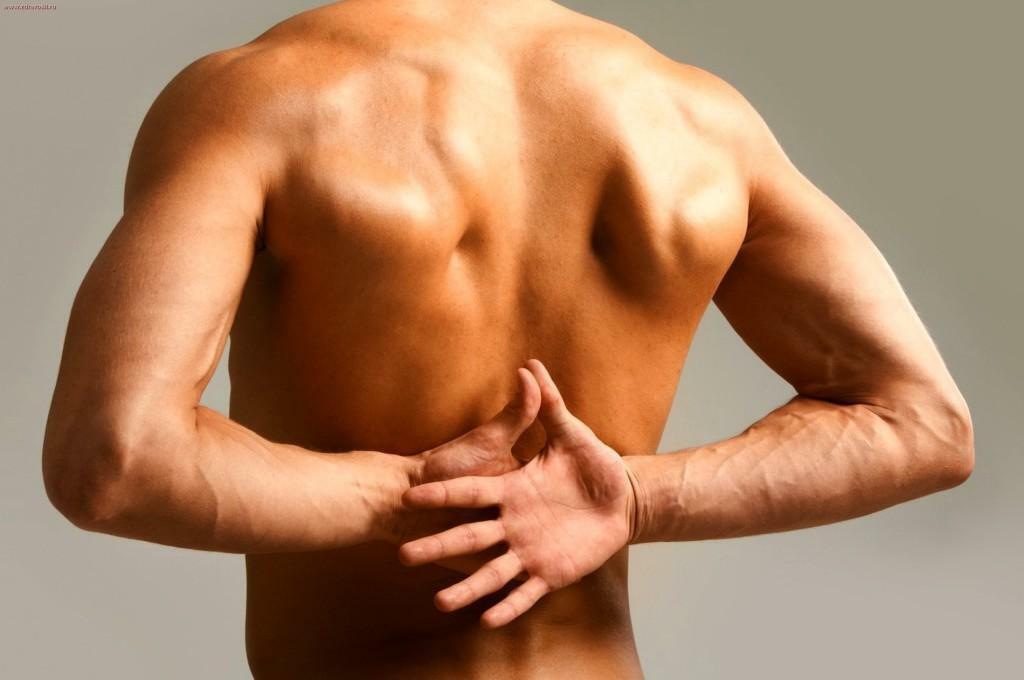The intervertebral hernia is a fairly common disease that requires compulsory treatment.
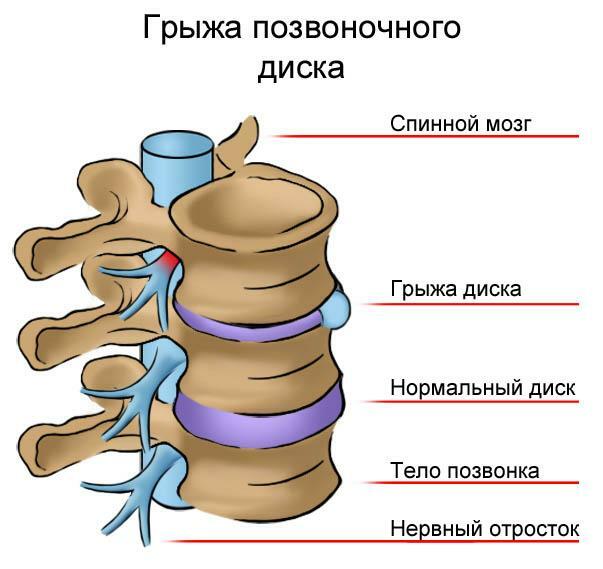
Intervertebral hernia
It occurs due to rupture of the intervertebral disc, when its fragments fall into the vertebral canal and form a bulge. In most cases, the hernia is located in the lumbar region, since it is here on the spine is the greatest load. Less often the disease is manifested in the chest and neck area, and in each case its signs have some differences.
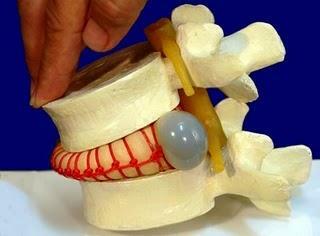
Disc herniation
Content of the material
- 1 Lumbar zone hernia
- 2 Neck hernia
- 3 Hernia zone
- 3.1 Video - Signs of the intervertebral hernia
Lumbar zone hernia
This department includes five vertebrae. Most often, the discs are damaged between 5 and 4 vertebrae( 90% of cases), as well as between 1 sacral and 5 lumbar vertebrae. At an early stage, the size of the hernia is very modest, so it does not put too much pressure on the nerve endings.
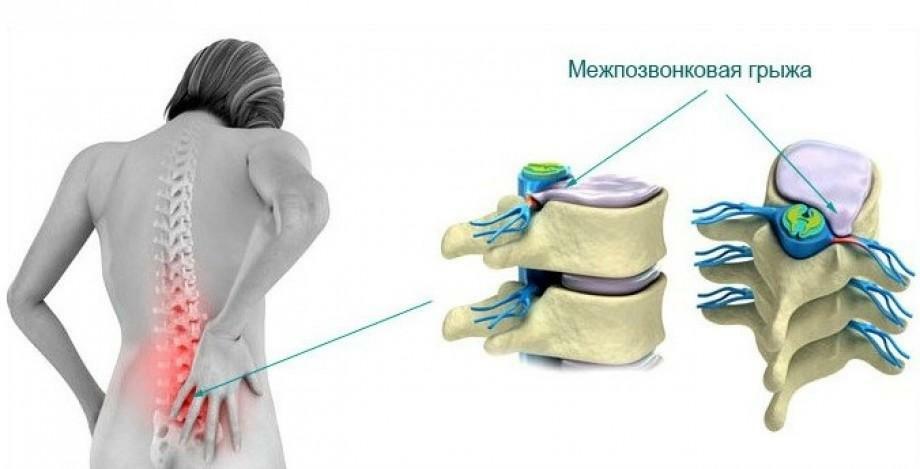
Intervertebral lumbar lumbar spasm
During this period, the main symptom of the disease are blunt periodic pain in the lumbar region, which increase after lifting weights, sudden movements, prolonged sitting or standing. Sneezing and a severe dry cough are also capable of causing or exacerbating pain.

Lumbar zone hernia
With further development and increase of the hernia, such symptoms appear:
- pain in the lower back increases markedly and gives to the buttock or leg;
- tingling in the limbs, as well as numbness of one or both legs, especially when sitting for a long time in one position;
- when lifting heavy objects or sudden movements of the body, the pain becomes sharp and shooting;
- limited mobility of the spine;
- may be an inflammation of the sciatic nerve.

Changes in intervertebral discs
If the hernia between the 5th and 4th vertebrae, in addition to common symptoms, exposes the weakness and numbness of the thumbs on the legs, pain in the thigh, a feeling of "goose bumps" on the skin.
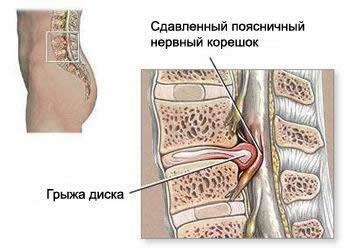
Herniated spine of the lumbar spine
If the problem is between the lumbar and sacral vertebrae, the pain is localized in the knee or ankle, it rises to the inside of the thigh. Often the hernia is formed immediately in 2-3 places of the spine, and then the described signs manifest simultaneously.
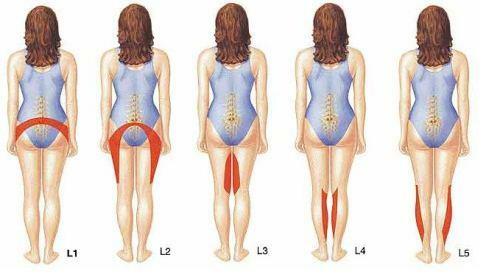
The principle of the formation of pain and sensitivity disorders in the intervertebral hernia
The increasing pressure on the nerve endings increases the pain and causes the muscles of the back to strain. Prolonged tension leads to the fact that it is not possible to straighten completely, the patient walks stooping, his posture is disturbed.

X-ray of the lumbar spine of
If tightened with treatment, after 5-6 months a person develops scoliosis or kyphosis, which provokes additional complications with health.

Hernia can cause scoliosis
In some cases, urination and stool disorders are added to the listed symptoms: a person has frequent urinary retention, constipation or diarrhea for no apparent reason.

Treatment of intervertebral disc hernia is best performed in a timely manner
Cervical spine
In the neck area, the most common sign of a hernia is an acute sudden pain in one or both arms. The pain has a different intensity and can spread from the shoulder to the hand, it all depends on the location of the hernia. Often the pain is accompanied by a slight tingling in the hands and numbness.
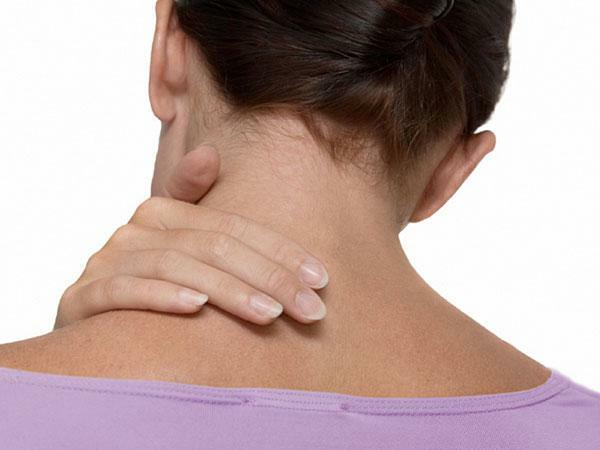
Herniated cervical spine, symptoms
Most often a hernia forms between 5 and 6, and also 6 and 7 cervical vertebrae. More rarely - in 4 and 5 intervertebral disc. Disks of this area are smaller and much closer to the spinal cord, so even minor damage provokes severe pain.

Intervertebral hernia of the cervical part
When a hernia occurs between 4 and 5 vertebrae, the pain is localized in the shoulders, a weakness appears in the forearm. The location of the hernia in 6 vertebrae weakens the biceps, causes weakness in the wrist, tingling, the thumbs on the arms grow numb.

A lot of nerve endings leave the cervical region, and each vertebra is responsible for its site
. If the problem is in 7 discs, the pain spreads all over the arm, there is weakness in the forearm and triceps, middle fingers become numb. With the formation of a hernia in the eighth disc, painful sensations spread to the little finger, it is difficult for the patient to squeeze fingers, hands noticeably weaken.

Weakness in the hands of a cervical rupture
Additional signs of the disease:
- for no apparent reason headache;
- is a pain in the neck;
- dizziness;
- noises in the ears;
- pressure rises.

Pain and dizziness in hernia
These symptoms may have varying degrees of severity, depending on the location of the hernia and the characteristics of the patient's body. In some cases, the cause of their occurrence are other diseases or injuries, therefore, to make a diagnosis and to engage in self-treatment is strictly prohibited !Such actions can aggravate the state and even lead to disability.
Hernia of the thoracic region
It is more difficult to determine the hernia of the thoracic zone, since similar signs appear in other diseases. First of all, these are diseases of the heart, lungs, various infections, gastrointestinal disorders. Injuries to the spine and tumors also have similar symptoms.
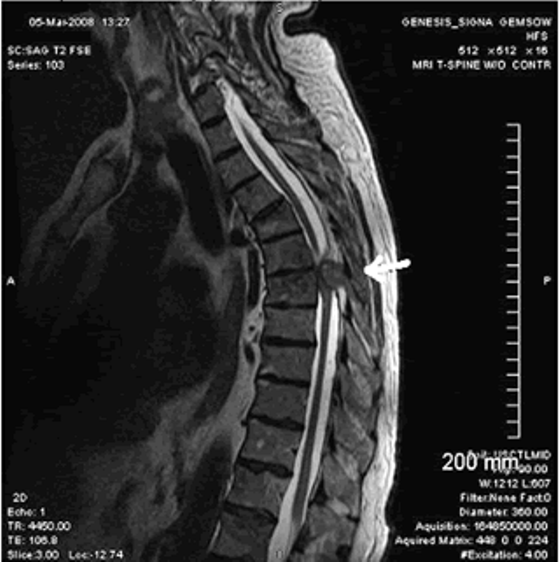
Hernia of the thoracic spine, MRI
General signs:
- blunt periodic pain in the back, arising at high loads, prolonged stays in one position, sneezing, strong cough;
- partial loss of mobility of the spine, the patient is difficult to straighten and keep his back straight;
- sensation of weakness, tingling and numbness in the problem area;
- problems with the intestines - constipation or diarrhea, difficulty urinating;
- appearance of strong shooting pains.

Symptoms of the thoracic region
The severity of the symptoms depends on the size and location of the hernia. The central location is manifested chest pain, similar to the cardiac, but the reception of cardiac drugs does not give an effect. Also, the back hurts( mainly in the upper part), there is numbness, increasing weakness.
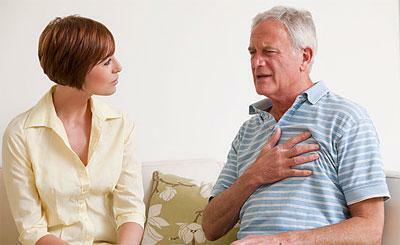
Pain is localized in the chest and back
With the development of the disease, pressure increases on the nerve endings, spinal dysfunction may develop, in some cases it causes leg paralysis.
In the lateral position, severe pain occurs in the chest wall and abdominal cavity, there are problems in the work of the intestine, the patient notes frequent tingling and numbness of the back portions.

Patient notes numbness of back
If the location of the hernia is central-lateral, pain and numbness appear periodically in the lumbar and in the thoracic region with varying intensity.
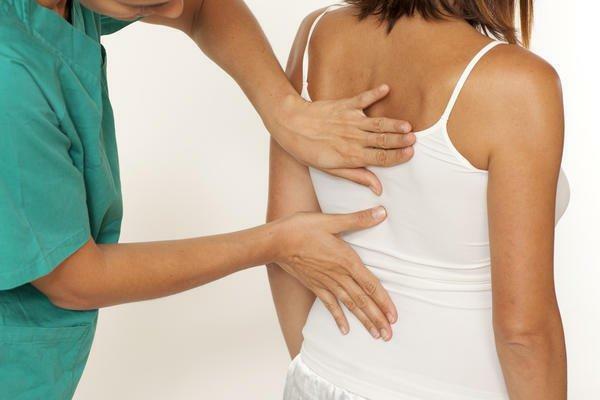
Pain and numbness may be in the back and thoracic spine of the
The presence of these signs is a serious reason to consult a specialist. Even if the pain is not very strong and quickly passes, it is impossible to tolerate and delay a visit to a doctor. At an early stage, it is not difficult to eliminate a hernia, but a neglected disease can lead to irreversible consequences.

Symptoms of a hernia



